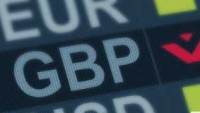 Global stock markets finished last week on the back of a tail wind from an epic intervention from the US Federal Reserve, which was announced along with another 6.6m increase in US weekly jobless claims, where the US central bank pledged a huge new $2.3trn program to support Main Street.
Global stock markets finished last week on the back of a tail wind from an epic intervention from the US Federal Reserve, which was announced along with another 6.6m increase in US weekly jobless claims, where the US central bank pledged a huge new $2.3trn program to support Main Street.
The Main Street Program, as it has been termed, will make 4-year loans to companies with less than 10k workers, $2.5bn in revenue and in good financial health before the crisis. Both principal and interest will be deferred for 1 year.
The Fed also pledged to expand the scope of its bond buying program to exchange traded funds that specialised in lower rated or junk bonds, though the limits of it will only be for companies that were investment grade until recently. That suggests it won’t be the blank cheque it appears to be initially, as it will only cover companies that have seen their debt downgraded due to the effects of the pandemic, like Ford for example.
The Fed wasn’t alone in its intervention last Thursday either, with the Bank of England also pledging that it would temporarily directly fund the UK government’s short-term spending plans in order to meet its day to day funding needs. This did raise some eyebrows about monetary financing; however, it isn’t anything the central bank hasn’t done before. It did something similar in 2008 at the height of the financial crisis, albeit not on the same scale
After days of arguing and procrastination OPEC+ members finally agreed on a cut to production of around 10m barrels a day, and while welcome it still falls well short of the types of cut needed to offset a demand shock of almost double that. Despite the cuts falling short of expectations Brent crude prices still managed to finish the day higher, though not enough to wipe out the big decline of the day before.
With only Asia and the US open yesterday, markets in Europe will have the opportunity to see if a weekend of Easter reflection has them feeling the same way about last week’s big gains, or whether to temper that reaction which saw the FTSE100, FTSE250 and German DAX all reach their best levels in almost four weeks.
Initial reactions from Asia and the US yesterday suggested an element of caution despite a weekend which saw death rates continue to decline in Italy, Spain and the UK, with Spain and Italy starting to introduce a tiny relaxation of some restrictions.
On the debit side of the ledger we got sight of the latest China trade numbers for March this morning, which showed an improvement on the numbers we saw in February, but still showed a decline in imports and exports of 0.9% and 6.6% respectively. It would have been surprising if there hadn’t been an improvement given that in March the country was coming out of a month long lockdown, but nonetheless both measures unsurprisingly still showed a decline.
While markets have taken the view that the numbers were better than expectations, it doesn’t change the fact that the declines still point to a sharp decline in this week’s Q1 GDP numbers, which are expected to show a sharp contraction in the Chinese economy.
Nonetheless Asia markets have reacted positively to the data, as well as the improvements in the death rates across Europe, and we look set for a strongly positive start for European markets when they reopen later this morning.
The extent of the current rebound has inevitably led to the question now being asked is whether or not we’ve seen the bottom in the recent stock market sell-off. This would seem an absurd conclusion to make given that by the end of this week, we could well see the number of Americans who are out of work in the last four weeks rise to over 20m.
Furthermore, despite some evidence that we are seeing a “flattening of the curve” in terms of cases and deaths, the prospect of an early end to the current status of lockdown still seems some way off, with French President Emmanuel Macron extending the lockdown in France until May 11th, with the added kicker that pubs and restaurants won’t reopen much before July.
Against that backdrop the mere idea that we’ve seen the bottom for stocks would surely come across as wishful thinking, especially since hundreds of businesses are likely to find it difficult to survive lengthy lockdowns.
Yet here we are and the question is being asked, largely because of the large-scale action take last week by the Federal Reserve, which may well help to put a floor under the stock market in the short term. Before one gets too carried away, these companies will still need to have the possibility of making a profit in the long term, and a lot of that will depend on when governments reopen their respective economies, unemployment comes down, and consumers start spending again. This still seems a long way off, which means that gravity may well reassert itself, once the economic damage that has been caused starts to become apparent in the numbers.
This is likely to be a key theme this week as the US earnings season gets under way in earnest with the release of the latest numbers from US banks starting today with the Q1 numbers from JPMorgan Chase and Wells Fargo, both of which got off to a poor start to the week yesterday. Wells Fargo in particular is likely to be a concern given its primarily domestic focus and exposure to the US mortgage market.
EURUSD – slipped back from the 50-day MA at 1.0970 yesterday but still looks to be slowly edging higher, bringing it closer to the 1.1000 area, and 200-day MA at 1.1060. Pullbacks are likely to find support at the 1.0770/80 area, and the lows last week. If we break below this level, we could slip back towards the previous lows at 1.0630.
GBPUSD – slowly making progress higher hitting a one month high above 1.2500. A move through the 50- and 200-day MA’s between 1.2560 and 1.2620 could well be considered very bullish, with a move towards the 1.2775 level.
EURGBP – now below the 200-day MA at 0.8740 we could well see further weakness towards the 0.8600 level and the March lows at 0.8620. We need to see a move back above 0.8800 to stabilise.
USDJPY – last week’s failure to push beyond the 109.20/30 area has seen the US dollar slide back, with a break below the 108.20 area opening up the prospect of further losses towards the lows this month at 106.80.
__________________
Other Forex Forecasts on ForexNews.PRO













